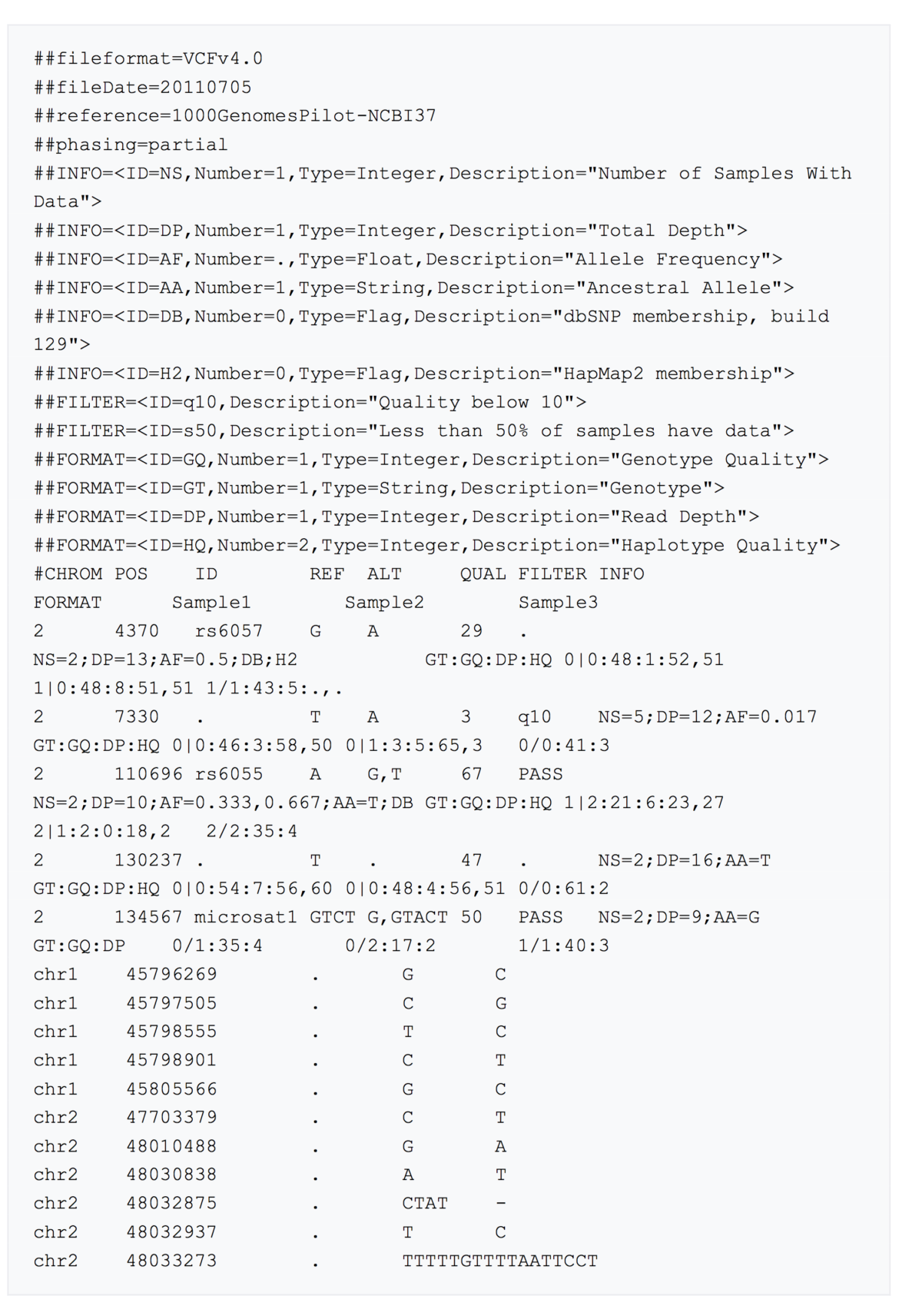Variant calling
Variants are called and stored in VCF format. This contains a header, and then data lines each containing information about a position in the genome.

Currently, there are different algorithms for calling SVs from long-read sequencing data, including:
Since we used NGMLR for the alignment, now we will use sniffles for calling structural variants.
sniffles -m alignment/child.nanopore.ROI.sort.bam -v variant_calling/child.nanopore.ROI.vcf
To visualise the VCF file:
less -S variant_calling/child.nanopore.ROI.vcf
How many SVs have been called?:
The -s parameter can be changed to 1, where s is the minimum number of reads that support a SV (by default is 10).
sniffles -m alignment/child.nanopore.ROI.sort.bam -v variant_calling/child.nanopore.ROI.s1.vcf -s 1
The information that is provided in sniffles’s output can be found in: http://github.com/fritzsedlazeck/Sniffles/wiki/Output
Hint: you can convert the VCF to a tab format:
/mnt/albasj/scripts/vcf2tab.py variant_calling/child.nanopore.ROI.s1.vcf > variant_calling/child.nanopore.ROI.s1.tab
- Are the variant calls what you were expecting? Why?
Inspect the nanopore alignment in IGV. For that, you will first open IGV:
igv &
and open the nanopore bam file (keeping the ones from illumina sequencing):
/mnt/albasj/analysis/albasj/alignment/child.nanopore.ROI.sort.bam